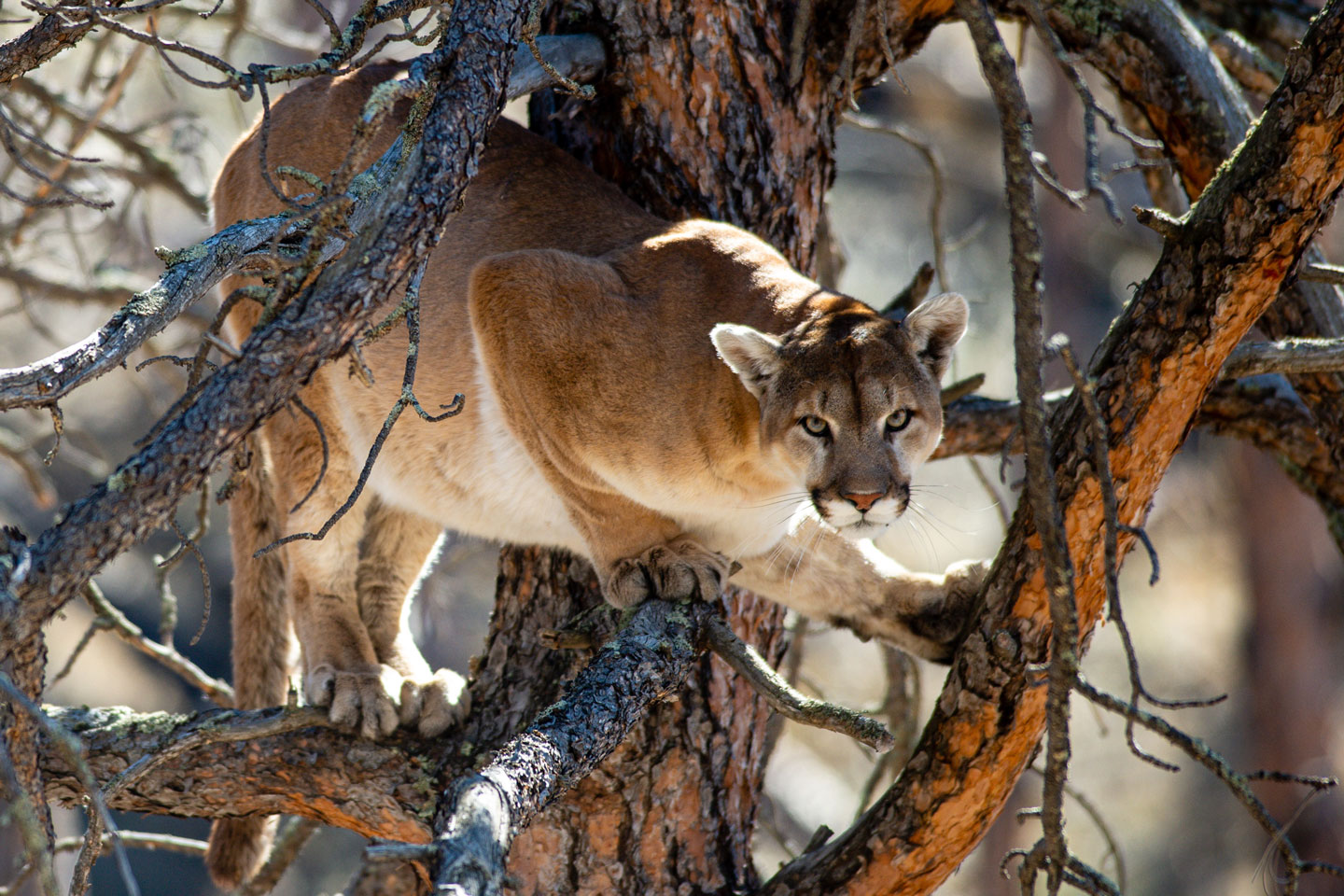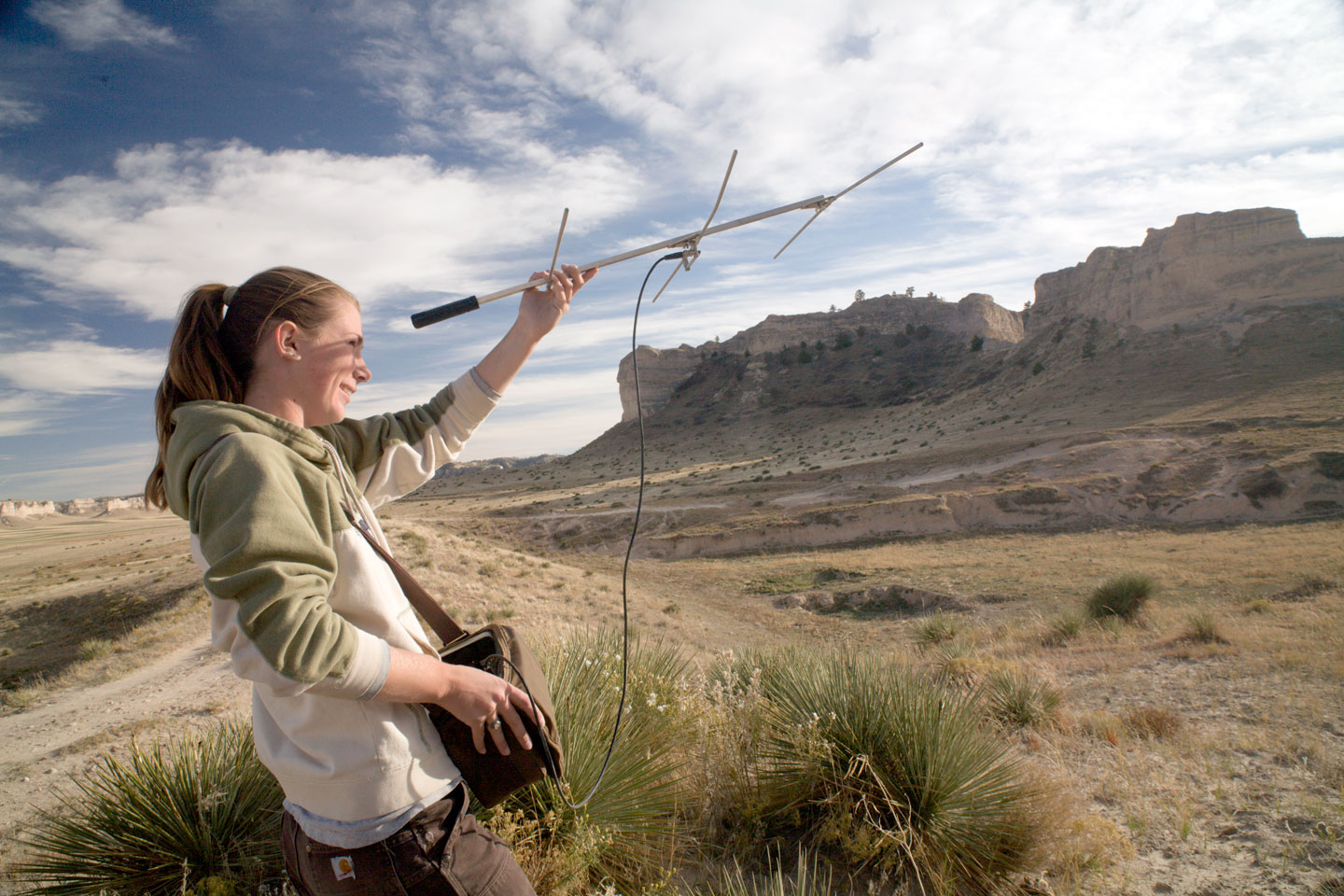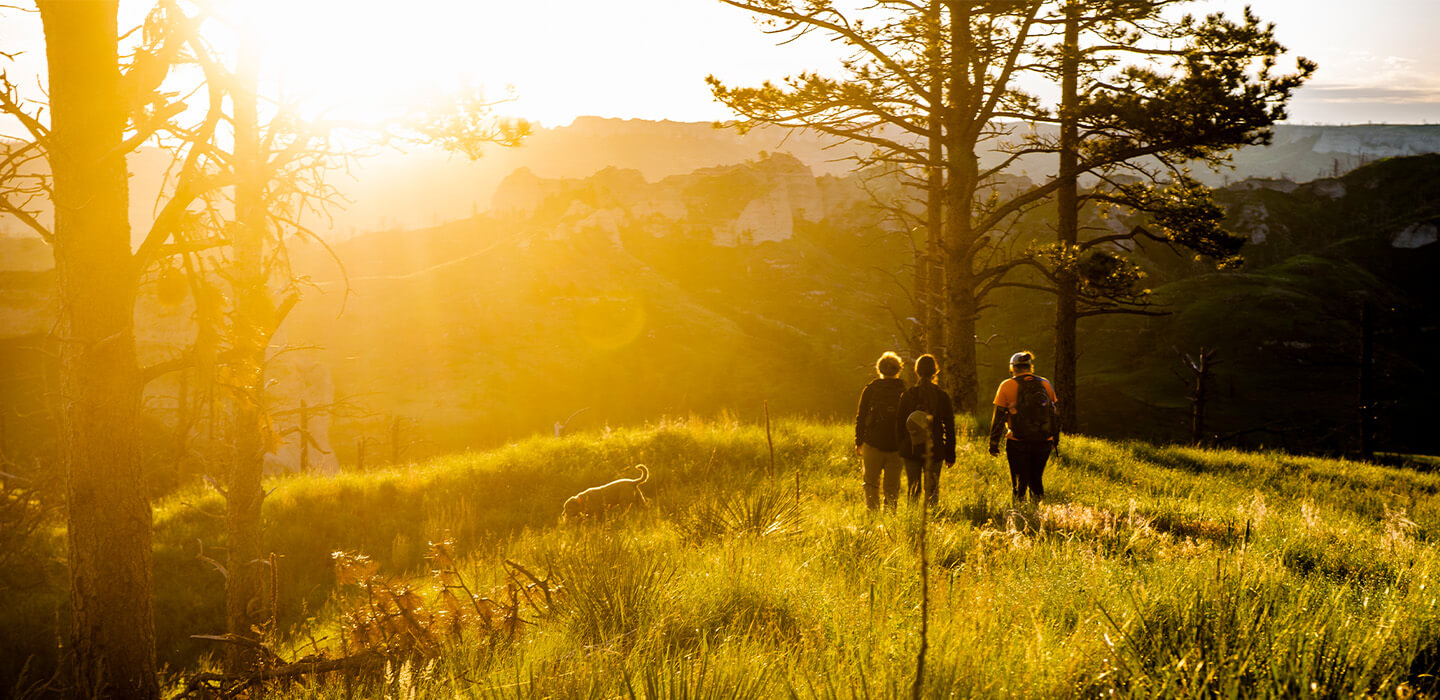Mountain Lion Management
The Commission’s management goal is to maintain resilient, healthy, and socially acceptable mountain lion populations that are in balance with available habitat and other wildlife.
In 2017, the Nebraska Game and Parks Commission approved a mountain lion management plan intended to guide management decisions based on the agency’s mission, as well as the management goals and guiding principles stated in the plan.
In 2003, the Nebraska Game and Parks Commission developed a response plan to respond to various situations involving the state’s growing mountain lion population.
2026 season recommendations
The Nebraska Game and Parks Commission annually considers a mountain lion hunting season based on staff recommendations. Recommendations take into account population totals, the health and resilience of those populations, available habitat, social tolerance and harvest opportunity.
Frequently asked questions
Get answers to common questions about mountain lions in Nebraska.
The Commission’s management goal is to maintain resilient, healthy, and socially acceptable mountain lion populations that are in balance with available habitat and other wildlife species over the long term. A resilient and healthy mountain lion population is one that:
- maintains a reasonable proportion of older age animals,
- maintains a sufficient number of breeding females to recover from mortality events,
- has healthy individuals with minimal burden from disease or malnutrition,
- is in balance with available prey, and
- maintains genetic variability and connectivity to other populations.
Mountain lions are native and returned through natural expansion from large populations in Colorado, South Dakota and Wyoming. Mountain lions in Nebraska are part of the larger western population and are not isolated. They continue to move back and forth between states.
Mountain lions are native to Nebraska but were eliminated by the 1890s. The first modern confirmation was made in 1991. Mountain lions were protected as game animals by statute in 1995 and statutes to allow hunting were created in 2012. There are presently breeding populations, or at least one instance of reproduction in four areas: the Pine Ridge, Niobrara River Valley, Wildcat Hills, and Northeastern Missouri River Bluffs.
Genetic surveys conducted since 2010 indicate that the population in the Pine Ridge ranges from 22-70, with the most recent survey from 2023 estimating 70 total animals. In addition to the population in the Pine Ridge, information from genetics, collaring, and trail cameras indicates there are more than 50 mountain lions in the Niobrara Valley and the Wildcat Hills. There are also one instance of reproduction in the Northeastern Missouri River Bluffs. Due to their recent establishment in these areas, there are no estimates for these populations at this time. A few more animals typically wander elsewhere in the state as well.
Mountain lion management is focused on ensuring the species long term sustainability and allowing hunting opportunities when appropriate. The Commission will monitor population size, demographics, connectivity, and the number of known mortalities to determine if a population would be resilient to harvest. If population information shows that a harvest can be sustained, and will aid in reaching management objectives, a hunting season may be held. If population information shows that a harvest may negatively impact the population over the long term, and does not aid in reaching management objectives, the Commission may determine that no harvest should be held (as was the case during 2015 through 2018). This careful management has made sure that no species managed as a game animal has ever become endangered in Nebraska.
Mountain lions continue to enter Nebraska from neighboring states and each year new kittens are born to resident females. These two sources replace harvested animals over time. The Commission is committed to maintaining resilient and healthy mountain lion populations in Nebraska over the long term.
Mountain lion permit funds are used for mountain lion research and management.
The Commission is conducting genetic surveys to estimate the size of resident populations. The Commission is also conducting a multi-year project placing GPS collars on mountain lions throughout the state, to learn more about population size, impacts on big game prey species, habitat use, and movements of mountain lions in Nebraska.
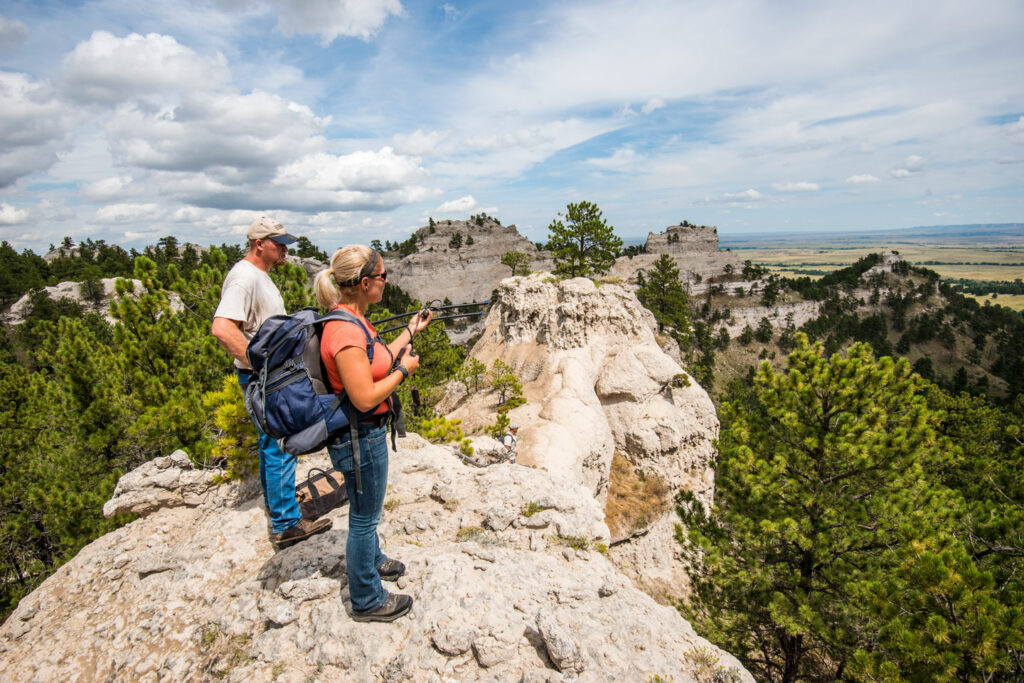
Distribution and recent expansion of mountain lions
Mountain lions – particularly young animals – can travel long distances in search of new territory. This not only allows for healthy genetic interchange, but it can replenish populations through new immigration. Most mountain lions documented in the eastern part of the state have been young males, which typically travel farther than young females. Nebraska is presently conducting research using GPS collars and genetic surveys that may help detect local and regional movements of individual lions.
Reporting a mountain lion observation
The Nebraska Game and Parks Commission is interested in verifying mountain lion observations in Nebraska. If you have evidence of a mountain lion (such as a trail camera photo, video, tracks, feces, hair, etc.) please call your nearest Commission office and we will investigate the observation. If you are not certain if the tracks you found are from a mountain lion, please consult the track comparison shown below. Cover the tracks with buckets to prevent destruction and inform the Commission. If you take photos of sign, please include a ruler or pen in the picture for size reference and take photos of more than one track in the track line.
If you encounter a possible mountain lion kill (deer or livestock), please leave the kill site undisturbed and inform your nearest Commission office immediately. We will then attempt to record a possible re-visitation to identify the predator.
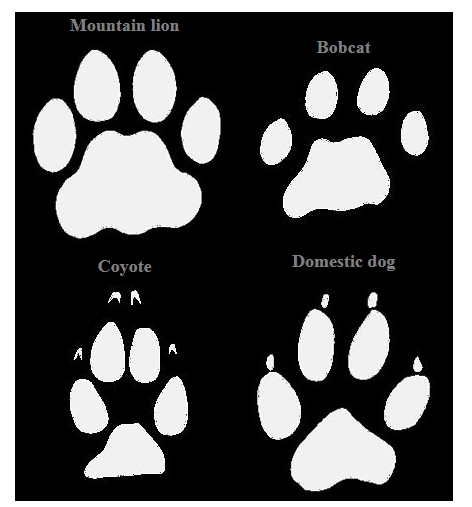
Track comparisons
The images to the right display tracks made by the front paws. Mountain lion front tracks are 3″ to 4 1/4″ long and 3 1/4″ to 4 3/4″ wide. Size alone cannot be used to distinguish mountain lion tracks as many dog tracks are as large, or larger, than mountain lion tracks. Claws usually do not register because they are retracted. Claw marks are usually (but not always) visible in coyote and dog tracks. The heal pad in cat tracks has two lobes in the front and three lobes in the back, while dog and coyote tracks show only one lobe in the front and two lobes in the back. The tracks from a small mountain lion and a large bobcat can be difficult to distinguish.
Facts about mountain lions in Nebraska
The Commission’s management goal is to maintain resilient, healthy, and socially acceptable mountain lion populations that are in balance with available habitat and other wildlife species over the long term.
Nebraska has breeding populations, or at least one instance of reproduction, in four areas; the largest is in the Pine Ridge, where part of the state’s inaugural mountain lion hunting season was held in 2014. The Niobrara Valley hunting unit was added in 2024 and the first season in the Wildcat Hills unit will begin in 2025. The Northeastern Missouri River Bluffs remain closed to hunting. There are likely additional mountain lions elsewhere in the state.
Mountain lions in Nebraska are part of the larger population that spans all Western states, and animals move freely between Nebraska and neighboring states, particularly South Dakota and Wyoming.
Genetic surveys conducted since 2010 indicate that the population in the Pine Ridge ranges from 22-70, with the most recent survey from 2023 estimating 70 total animals. As with all wildlife populations, the number in an area will fluctuate over time, so these estimates only apply to the years that the surveys were conducted.
All populations continually change in size due to births and deaths as well as animals that enter or leave the area. It is not accurate to only subtract deaths from a population estimate without accounting for changes through births and animals entering or leaving the area over time.
What to do in case of an encounter
Should one encounter a mountain lion, the Game and Parks recommends the following:
- Do not approach a mountain lion.
- Leave the animal an avenue of escape.
- Stay calm, move slowly.
- Back away safely if you can. Do not turn your back to the lion or start running.
- Raise your arms or backpack to appear larger.
- Lift up your children to prevent them from running.
- If you are being attacked fight back. Mountain lion have been successfully driven off with bare hands. Use rocks, or whatever you can get your hands on. Try to remain on your feet or get back up if knocked down.
Future
Considering that mountain lions have established populations in three areas, and they are managed as a game animal with the goal of maintaining mountain lion populations in Nebraska over the long-term, it is likely that the future of mountain lions in the state is secure. State law is in place that allows for responses to individual animals that may threaten human safety or depredate on livestock. A management plan will continue to provide protocols for handling a variety of situations involving mountain lions in Nebraska.
A combination of understanding and tolerance will allow us to coexist with mountain lions and prevent us from repeating the mistake of extirpating this magnificent native animal from Nebraska once again.

